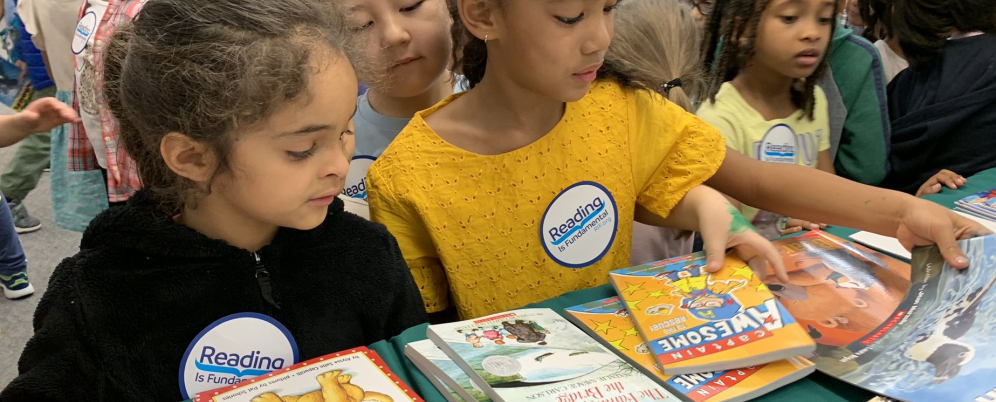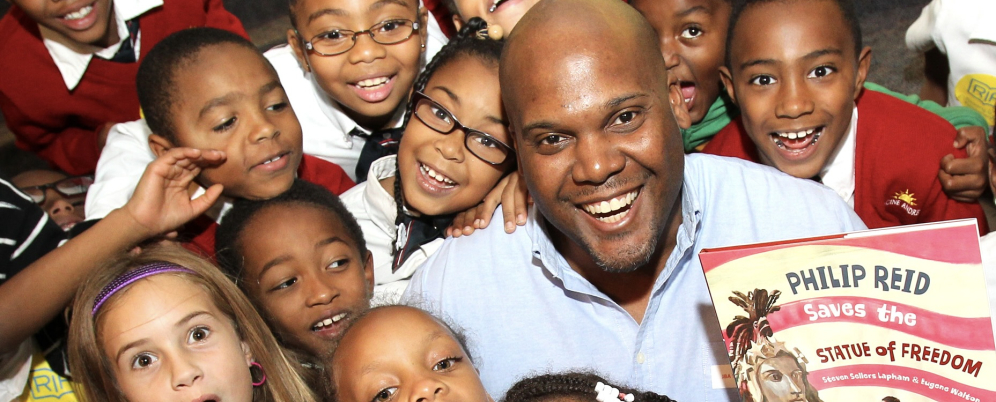Boosting Writing Achievement and Joy with Engaging Scaffolds and “Cool Tools” for Results
Enhancing and encouraging creativity is key to developing a strong educational foundation, an approach which aligns closely to Reading Is Fundamental’s (RIF) mission. At RIF, we are committed to inspiring joy for learning by providing access to books and reading resources that are chosen by students. The improved reading and writing performance, language development, and academic outcomes that result from these initiatives highlight the benefits students experience from enjoying creative subjects, such as writing. However, the process of generating original content can often feel intimidating when presented in the classroom. Read on to hear from Lori Oczkus, a renowned literacy coach, best-selling author, and international speaker, as she shares scalable lessons and tips for guided writing. Be sure to watch the recording of her recent webinar: Boosting Writing Achievement and Joy, where she detailed her methods that focus on teaching personal narrative, opinion, and informational writing to improve student achievement.
Many of our students struggle with writing. Do any of these writing behaviors sound familiar? Students stall as they avoid writing by sharpening pencils or looking around the room.
After you model the lesson, they still inquire, “What do we do?” Or perhaps your students struggle coming up with ideas, organization, or vocabulary as they write.
What can you do to improve student writing and motivation? Evidence-based practices strengthen writing instruction and engage students. Guided writing is a gradual release approach where the cognitive load is transferred from the teacher to the students by breaking a skill or concept into pieces. In this model, students engage with strong mentor texts and brief teacher modeling. Students then practice sentence-level writing on strips or sticky notes, with clear guidance from the teacher. In pairs or small teams, students collaborate to combine their individual pieces into a cohesive whole, learning how ideas grow stronger when shared.
Guided writing is easy and motivating for all students when you incorporate “cool tools” such as giant posters, sticky notes, colorful sentence strips, different colored markers and pens, drama, gestures, and foldable paper organizers (Teaching Guided Writing by Lori Oczkus).
Here are some classroom examples using “cool tools” and sentence scaffolding to guide and support student writing.
- After reading informational texts about spiders, first graders each compose one favorite fact on a sticky note. Teams read and order their sticky notes into a group poem. They may also illustrate, perform, and display their poems.
- After reading graphic novels, third graders write on sentence strips and share one reason their favorite “superhero” is the best. They join a team of four students with their chosen hero and combine their sentences into a group persuasive paragraph. Students present their creations to the class.
- After reading several articles about the Titanic, fifth graders compose summary sentences on strips for team paragraphs. Students secure strips onto large colorful papers and combine them for a giant-sized class report on the Titanic.
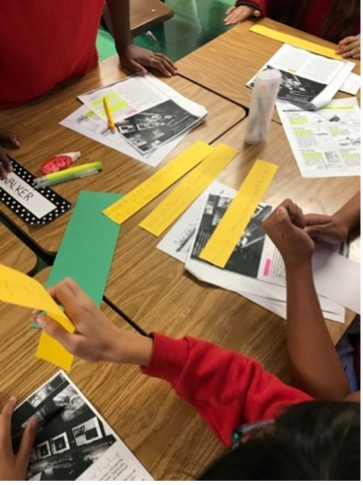
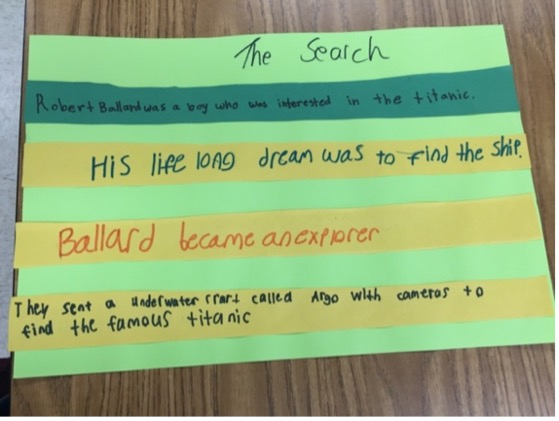
Each student contributes a carefully crafted sentence to the group paragraph.
Quick Starter Lesson- A Strip Favorite Part Summary
An easy way to get started with guided writing is to model how to choose a favorite or important fact from an informational text or a favorite event from a fiction text. When students write about their reading comprehension improves!
Teacher modeling
• Model how to choose a favorite or important fact from an informational text or a favorite or pivotal event from fiction.
• Write your example on a sentence strip.
Student Collaborative Writing
• Students each write a response to the reading on a strip of paper or sticky note.
• Students work in teams to share and order their strips into a logical group summary or poem.
• They assemble and glue or tape their strips into a logical group summary or poem.
• Teams may also illustrate their writing.
• Groups participate in sharing with the class. An option is for all students to participate in a “gallery tour” as they walk to read the final products.
Note: Challenge students to layer in deeper levels of sophistication in their writing by including sentence starters and transition words. Students read summaries aloud. When every sentence starts the same, encourage students to rewrite some of the sentences for variety.
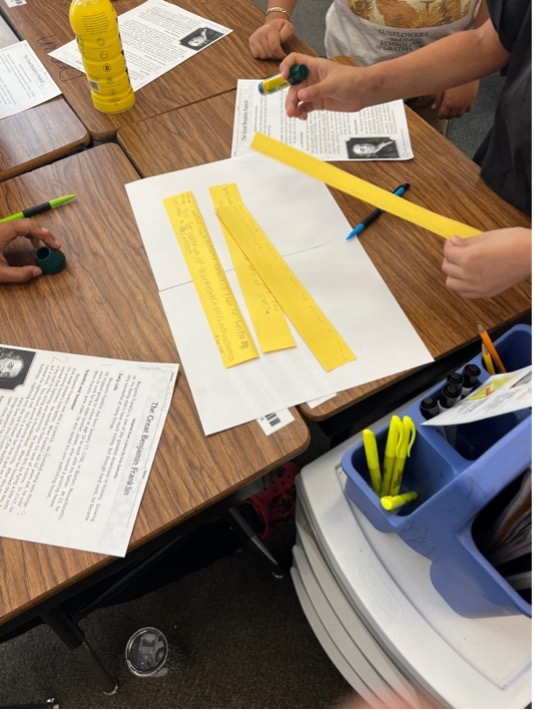
Students read an article about Ben Franklin and order their favorite facts.
Be sure to watch the free recording of my September 24th webinar, where you’ll learn the powerful impact that guided, evidence-based writing instruction can have on your students. Learn specific ideas to improve narrative, persuasive, and informational writing. Guided writing requires very little prep and dramatically improves writing while fostering an environment of equity, independence, and success.
Lori Oczkus is an author, literacy consultant, and popular speaker across the United States and internationally. Lori is the author of many practical books and resources, including Teaching Guided Writing by Lori Oczkus (NCTE) and Guided Writing Practical Lessons Powerful Results(Heinemann). Lori is also the author of the best-selling book Reciprocal Teaching at Work: Powerful Strategies and Lessons for Improving Reading Comprehension (ASCD) with a foreword by renowned researcher, John Hattie. Contact Lori at www.lorioczkus.com for more information.
